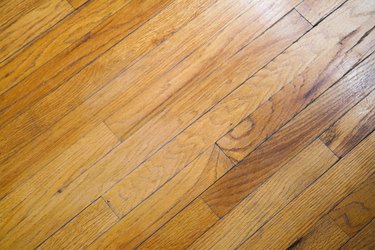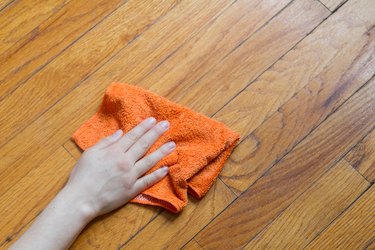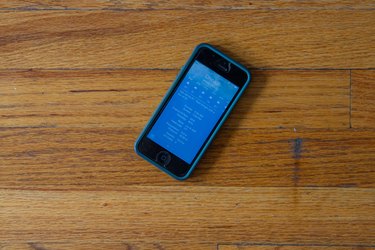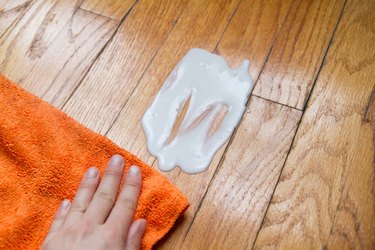
The cloudy haze on your hardwood floor may be residue left over from cleaning with a product you shouldn't have been using; it could be wax build-up or salt deposits. It could also be caused by moisture. In the first three cases, cleaning the floor with an appropriate cleaner should lift the haze, but if the problem is moisture-related, the fix may be trickier: you may have to screen the floor and re-coat with fresh finish.
Water-Based Cleaners and Old Wax
Video of the Day

Hardwood flooring manufacturers are virtually unanimous in advising against cleaning with water-based cleaners. Some products advertised for use on hardwood floors contain water though, and these cleaners sometimes leave cloudy streaks. In most cases, you can get the cloudiness out by using a cleaning product recommended for your floor; it's safe to use because its cleaning agents are carried in ethylene glycol instead of water. Haziness may also be the result of a layer of old wax. Removing the wax usually isn't fun -- it's a hands-and-knees job using a rag and mineral spirits -- but it may be necessary to make the floor shine again.
Video of the Day
Clean Salt Deposits with Vinegar

In the winter, it's common for people to track snow into the house on their shoes, and the snow is often laden with salt. You may not notice the hazy salt deposits until the snow has melted and the water has evaporated, and by then, it's too late to simply wash it off with a hardwood floor cleaner. Many flooring manufacturers advise against using vinegar, but it's one of the most effective cleaners for salt deposits. Avoid damage to the floor finish by using it sparingly. Mix a one-to-one solution of vinegar and water, dampen a cloth and rub off the cloudy deposits by hand. Rinse with another rag dampened with clear water and dry the floor immediately with a third rag.
Hazing in High Humidity

To protect your floor from moisture damage, you should maintain the humidity between 40 and 60 percent. When the humidity is higher, the wood can swell and the finish can turn cloudy, especially if the floor was finished in place, which means it was sanded and finished during installation. The cloudiness comes from moisture trapped in the finish -- it may actually be seeping up from the inside the wood. You may notice this cloudiness, which is known as blushing, on a freshly finished floor if the finish was applied in high-humidity conditions. Blushing might seem like a major problem, but it isn't that difficult to fix.
Getting the Blush Out

If blushing is confined to a small section of the floor, you can usually leach out the water using olive oil in mayonnaise. Spread mayonnaise on the affected areas and leave it overnight; the oil seeps into the finish and replaces the water, and the hazing is gone when you wipe off the mayonnaise in the morning. If the entire floor is affected by blushing, you may have to scuff the finish with a floor buffer and sanding screen. This procedure, called screening, etches the surface and allows water to escape. When you apply a fresh finish in appropriate humidity conditions, the cloudiness will be gone.